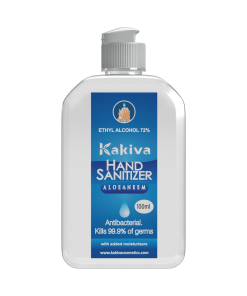Gross Margin: A Simple Introduction Bench Accounting
Rising gross margins suggest a company is growing more profitable and gaining operating leverage by spreading costs over higher Revenue. Declining gross margins sometimes signal problems like production inefficiencies, inferior product quality, or increased price competition. Analysts view rising gross margins as a positive sign of business health and improving profitability. Conversely, pharmaceutical and technology companies invest heavily in R&D to develop new products, sacrificing short-term margins for potential long-term payoff.
- Top IT services firms like TCS, Infosys, and HCL Tech operate with gross margins in the 30-35% range.
- And it means companies are reducing their cost of production or passing their cost to customers.clarification needed The higher the ratio, all other things being equal, the better for the retailer.
- For them, margins often compress as sales increase due to growing variable costs.
- However, because these types of strategies are so typical when looking to gain customers and drive sales, they must be in line with the higher-level financial objectives set for the firm.
- Events like natural disasters, geopolitical issues, or global pandemics can disrupt supply chains, leading to increased costs.
Two such companies are Colgate-Palmolive (CL) and the Kimberly-Clark Corporation (KMB). Some of the $26 million would still need to be spent on paying shareholders or settling other business expenses, such as fees and taxes. Andy Smith is a Certified Financial Planner (CFP®), licensed realtor and educator with over 35 years of diverse financial management experience. He is an expert on personal finance, corporate finance and real estate and has assisted thousands of clients in meeting their financial goals over his career. Another approach to streamlining processes is by implementing Lean principles. These help businesses identify activities that generate value and eliminate those that don’t contribute meaningfully to the bottom line.
Gross Margin vs. Gross Profit
Price wars can emerge in markets with many players and limited product differentiation. Companies might find themselves in a situation where they need to reduce prices to remain competitive, thus compressing their margins. Another strategy is value-based pricing, which sets prices based on the perceived value of a product or service rather than internal costs. By analyzing trends in sales volume, pricing strategies or cost-reduction initiatives can be implemented to maximize profits while maintaining high levels of customer satisfaction.
Supply chain efficiency
Gross Margin is the percentage of net sales that a company retains after paying for the direct costs of producing the goods and services it sells (known as COGS, Cost of Goods Sold, or Cost of Revenue). The gross margin can also provide insights into which products and services are the most efficient to produce and sell, as well as where to make cost improvements. The gross margin and the net margin, or net profit margin, are frequently used in tandem to provide a comprehensive look at a company’s financial health. Investors can compare a company’s gross margin to industry averages and competitors to assess whether the company’s gross profit is healthy and sustainable. The gross margin measures the percentage of revenue a company retains after deducting the cost of goods sold (COGS). “If you’re noticing over time that gross margins are shrinking, you need to look at the root causes—that will help you make decisions about how to adjust,” Beniston says.
This metric is essential for assessing a company’s production efficiency over different time periods. It’s important to note that merely comparing gross profits from year to year or quarter to quarter can be deceptive, as gross profits may increase while gross margins decline. Gross profit and margin are both important financial metrics used to assess the profitability of a company.
- Trend analysis identifies patterns and opportunities, and variance explanations help understand performance deviations.
- A decline in the gross margin percentage may be cause for considerable concern, since it can imply a decline in the competitiveness of a company’s products and/or services in the marketplace.
- For example, a retailer may increase the price of an item during peak shopping periods but lower it during off-seasons when demand is low.
Gross margin is a strong indicator of profitability
The gross margin of individual products could indicate to management that some products should be promoted more aggressively and some products should be phased out. A good gross profit is relative – it depends on the industry, business model, and market conditions. The key is to ensure efficient cost management, strong pricing strategies, and sustainable margins to maintain financial health. The terms gross margin and gross profit are often used interchangeably, but they’re two separate metrics that companies use to measure and express their profitability. Both factor in a company’s revenue and the cost of goods sold, but they’re a little different.
Factors Affecting Gross Profit Margin
Markup reveals what amount of rupees a company is able to mark up the costs to produce its products. But gross margin puts that markup in the context of the company’s total sales revenue. For stock investors, both metrics offer useful angles on a company’s pricing strategies and profit generation.

A high and stable gross margin over time is a positive sign that a company has strong pricing power and control over costs when evaluating potential stock investments. This enables it to consistently gross margin definition generate cash from operations, even during times of economic uncertainty. Companies with low or declining gross margins are likely struggling with competition or operational inefficiencies. Cost of Goods Sold (COGS) is an important financial metric that investors analyze when evaluating stocks, especially for companies that manufacture and sell products. COGS refers to the direct costs attributable to the production of goods sold by a company. This includes the cost of raw materials, direct labor costs, and overhead costs directly related to production.
How Companies Can Improve Their Gross Margins
While gross profit appears on an income statement, not all accountants or bookkeepers will also include gross margin. Banks and investors may ask to see net profits to demonstrate that your company can successfully generate a profit after all costs are accounted for. As a publicly listed company, HUL shares trade on the Bombay Stock Exchange and the National Stock Exchange of India.
A company with shrinking operating margins but steady or expanding gross margins sometimes needs to focus on reducing general overhead and administrative costs across divisions to boost profitability. A high gross profit margin indicates that a company is efficient at generating profits from its core business operations. Companies with high gross margins are able to sell their products or services at a substantial markup over production costs.
Gross profit provides a dollar amount that can be easily understood, while margin provides a percentage that can be used to compare companies of different sizes. Gross profit is more useful for evaluating the overall profitability of a company, while margin is more useful for evaluating the efficiency of its operations. Investors care about gross margin because it demonstrates a company’s ability to sell their products at a profit. A positive gross margin proves that a company’s sales exceed their production costs. These indirect costs can have a significant impact on a company’s profit margin. Net profit margin includes all the direct costs and indirect costs that go into running a business, from labor to administration and general costs.
Customers are able to easily substitute or decrease buying volume in response to price hikes. So, she calls up her accounting software and starts doing some calculations. Each of these profit margins weigh the cost of doing business with or without certain costs factors. For a detailed explanation of each profit margin, and how to calculate them, check out “How Do You Calculate Profit Margin for Your Startup”. This means Tina’s business is doing exceptionally well with a 18.75% gross profit margin. However, her store is in a prime tourist location, and she charges a heavy premium for her clothing.
In conclusion, gross profit and margin are both important metrics for evaluating the profitability of a company. While gross profit shows the actual dollar amount of profit generated, margin shows the efficiency of the company in generating profit from its revenue. Both metrics have their own strengths and limitations, and should be used in conjunction to get a comprehensive view of a company’s financial health. The net profit margin takes into account all business expenses, not merely COGS, and is, therefore, a more stringent metric by which to measure profitability. Gross margin is one of the most important indicators of a company’s financial performance. It’s the portion of business revenue left over after you subtract direct costs, such as labour and raw materials.
 Kakiva Hair Treatment (Honey Drops)
1 × ₦3,700.00
Kakiva Hair Treatment (Honey Drops)
1 × ₦3,700.00 Kakiva 400ml Hand Wash
3 × ₦1,300.00
Kakiva 400ml Hand Wash
3 × ₦1,300.00 Kakiva Coconut Oil Moisturising Hairspray
1 × ₦2,200.00
Kakiva Coconut Oil Moisturising Hairspray
1 × ₦2,200.00 Kakiva 100ml Hand Sanitizer
1 × ₦600.00
Kakiva 100ml Hand Sanitizer
1 × ₦600.00 THE KAKIVA DREADLOCK SET
1 × ₦14,950.00
THE KAKIVA DREADLOCK SET
1 × ₦14,950.00 Kakiva Transitioning Set
1 × ₦10,950.00
Kakiva Transitioning Set
1 × ₦10,950.00 Kakiva Anti-Dandruff Set
1 × ₦11,300.00
Kakiva Anti-Dandruff Set
1 × ₦11,300.00 Kakiva Hair Styling Set
1 × ₦15,100.00
Kakiva Hair Styling Set
1 × ₦15,100.00 KAKIVA ANTI SHRINKAGE SET
1 × ₦7,600.00
KAKIVA ANTI SHRINKAGE SET
1 × ₦7,600.00